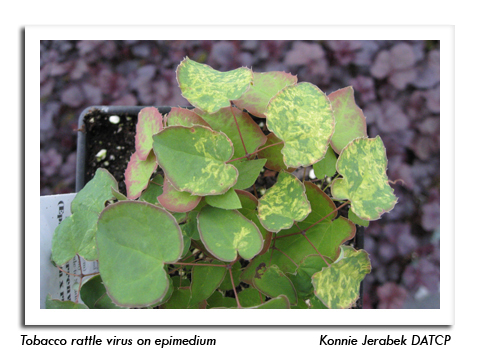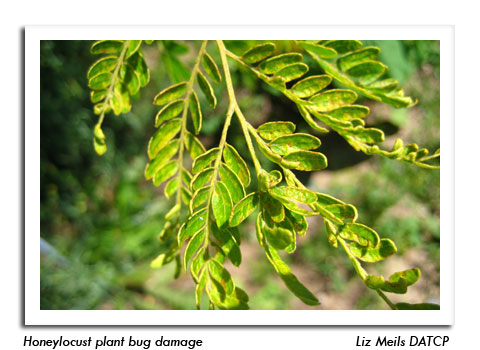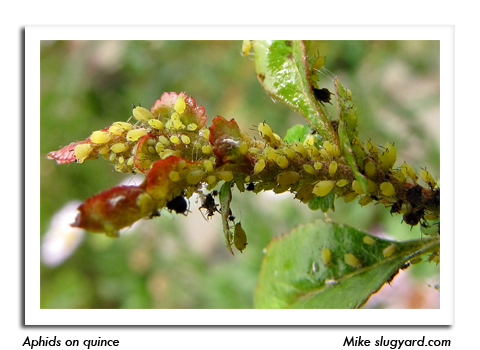
 |
|
|
Nursery & Forest
Volume 58 Number 3 Date 05/16/2013 VIRUSES - Recent inspections of greenhouses and garden centers have found relatively few insect and disease problems, with the exception of plant viruses. Symptoms of tobacco rattle virus (TRV) were observed on several plants, including clematis 'Ramona', 'Jackmanii' and 'Bee's Jubilee', delphinium 'Guinevere', dicentra 'Alba', epimedium 'Rubrum', phlox 'Eva Cullum' and 'Junior Dance' and pachysandra 'Green Carpet'. Cucumber mosaic virus (CMV) was noted on aconitum 'Azure Monkshood', lobelia 'Ruby Slippers' and mandevilla 'Sun Parasol'. Both CMV and TRV are spread mechanically by contaminated pruning tools and have become very common viral diseases in the nursery trade. Virus-infected nursery stock must be removed from sale and destroyed. HONEYLOCUST PLANT BUG - Nursery inspectors report that nymphs are emerging in Dane and Milwaukee counties and feeding on honeylocust leaves. Early-season feeding by these immature plant bugs causes leaf distortion, discoloration and stunting, and is usually more severe than damage by the adults later in June and July. The optimal window for treatment of this most damaging life stage is 7-10 days after budbreak. Yellow-leaved cultivars, such as ''Sunburst', are more susceptible to injury than some of the green-leaved strains like 'Sunset' or 'Shademaster'. APHIDS - Low to moderate populations of aphids were found on a variety of annuals and perennials at retailers in southeastern Wisconsin. These insects can directly damage nursery stock hosts when densities are high, but in most instances aphids are an aesthetic problem. Of larger concern is the secondary growth of sooty mold which results from their honeydew production. Insecticidal control is usually not required as there are many natural enemies that regulate populations. -- Liz Meils, DATCP Nursery Inspector 



|
|
|